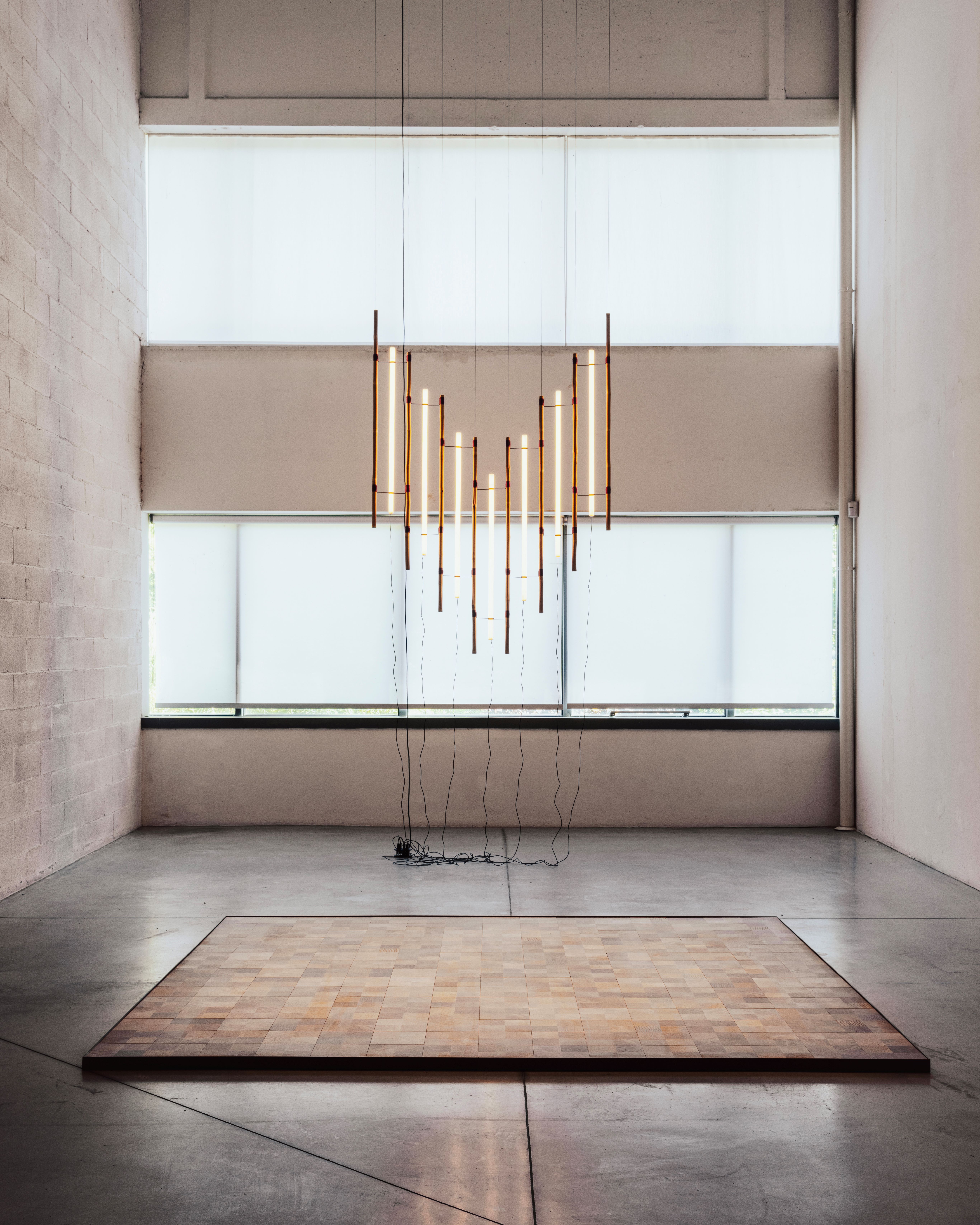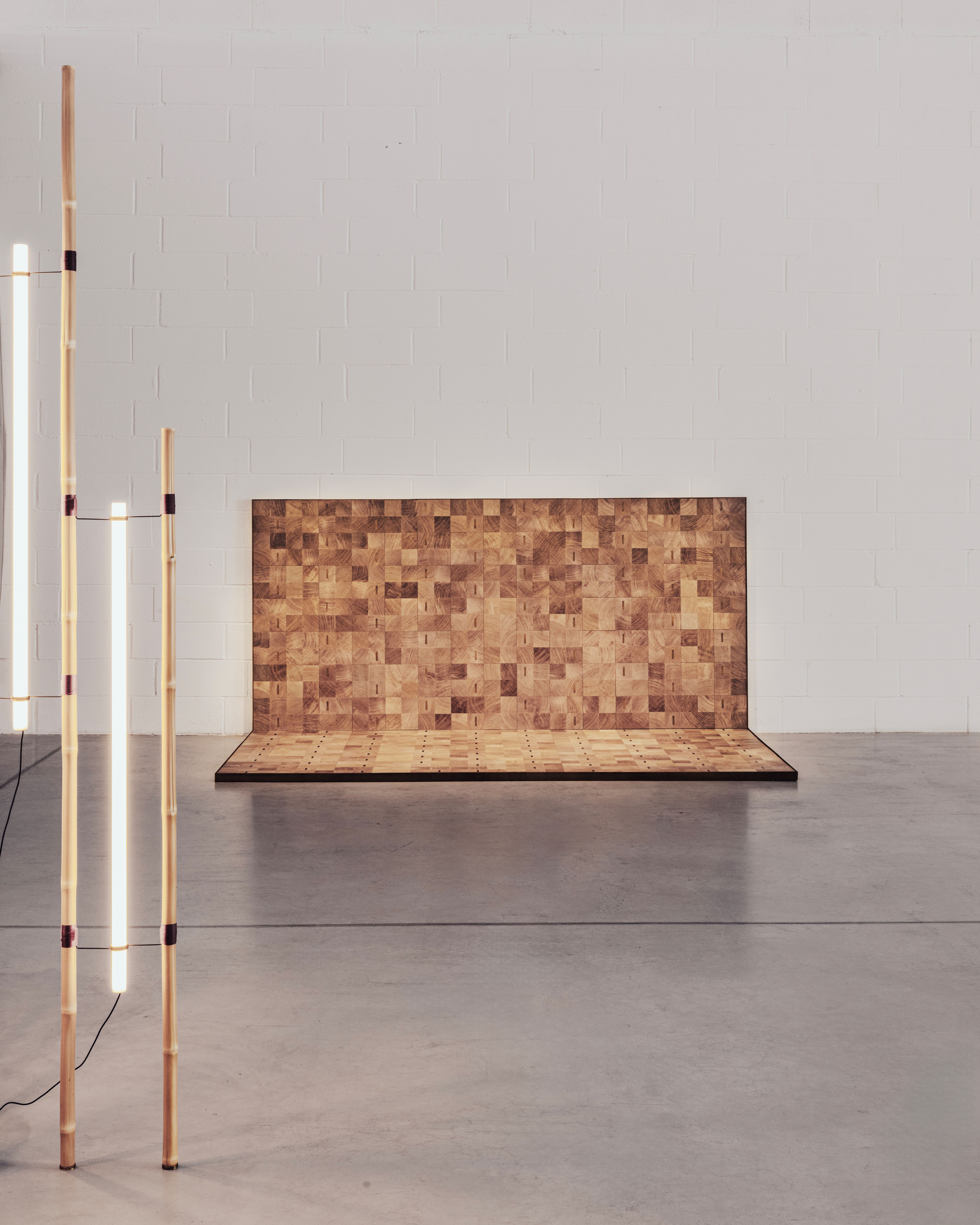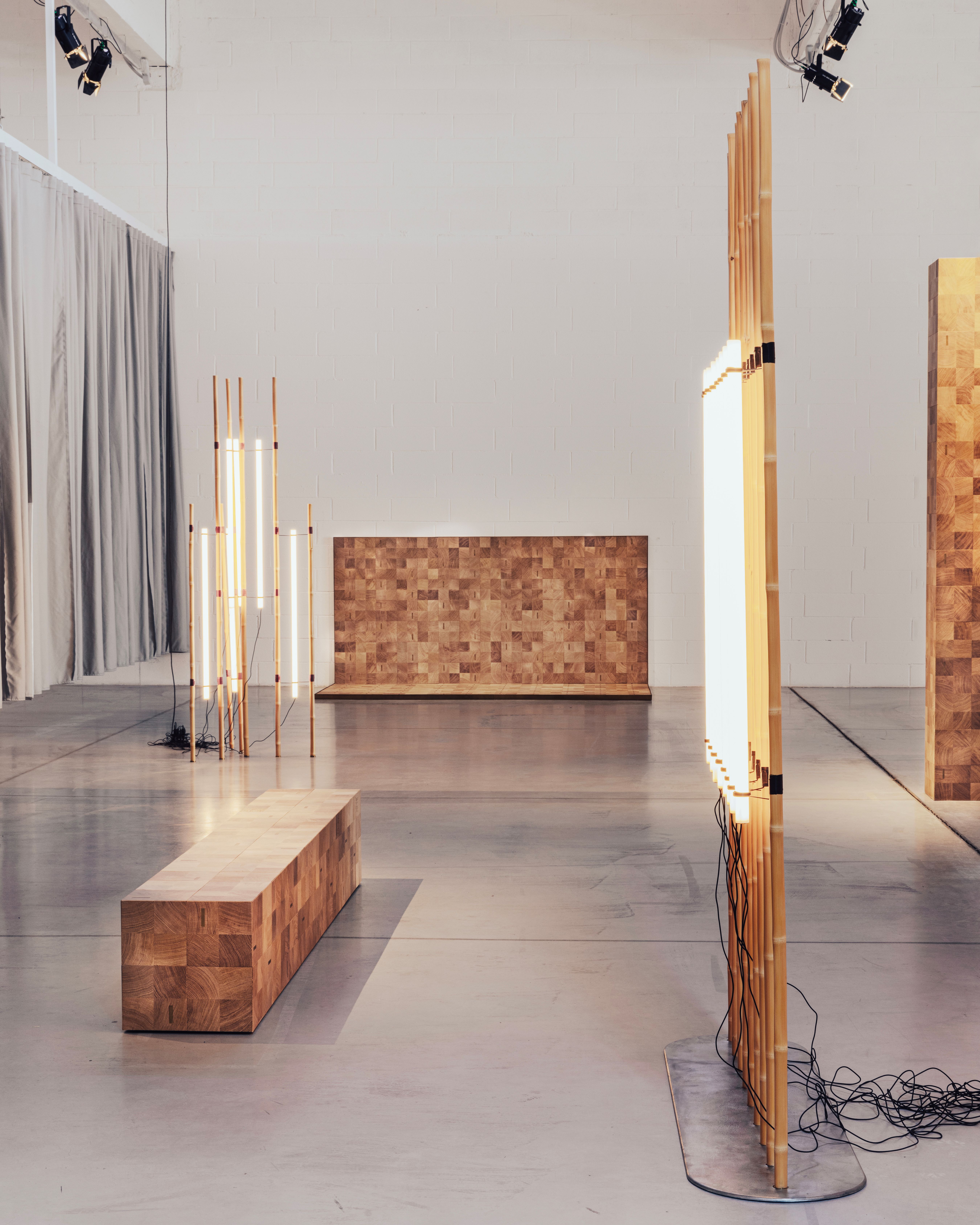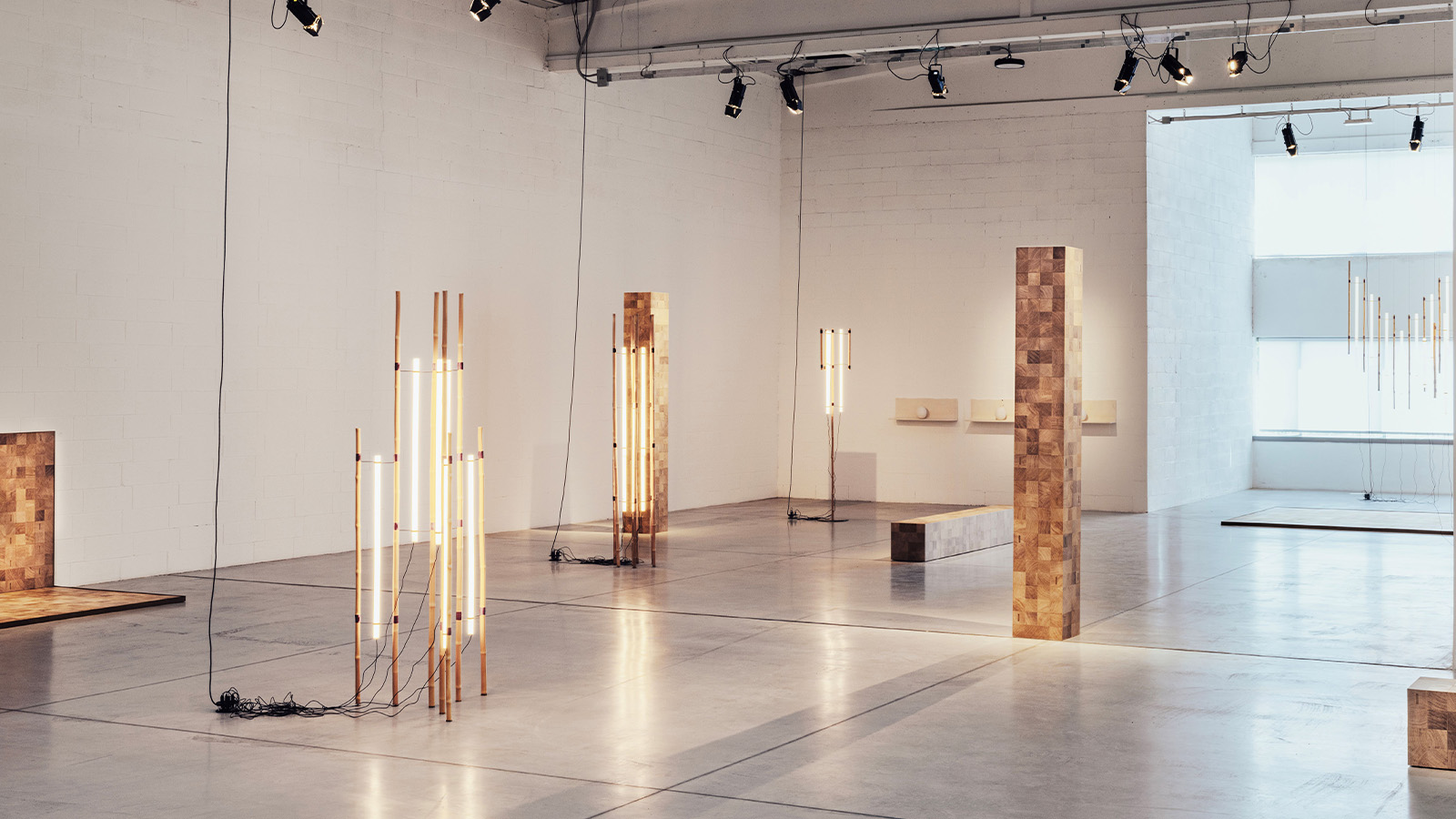
The industrial suburb of Sassuolo in Italy’s Emilia Romagna region, a ten-minute drive from the culinary hub, Modena, is not what comes to mind when you imagine the spoils of Italy. Miles of grey, characterless warehouses line roads heaving with lorries piled high with heavy palettes. Though it may appear unassuming, the region is in fact an important centre in the landscape of Made in Italy design, as one of the county’s leading producers of ceramic tiles. But among the Goliath industries and small-scale producers, Mutina, founded in 1973, has singled itself out as an innovator, turning simple surface coverings into a veritable artform alongside past collaborators like the artist Nathalie du Pasquier and the designer and researcher Hella Jongerius. This fact is only confirmed by its latest collaboration with the lighting designer Michael Anastassiades – on a newly debuted tile made entirely in wood.
First look: Michael Anastassiades for Mutina
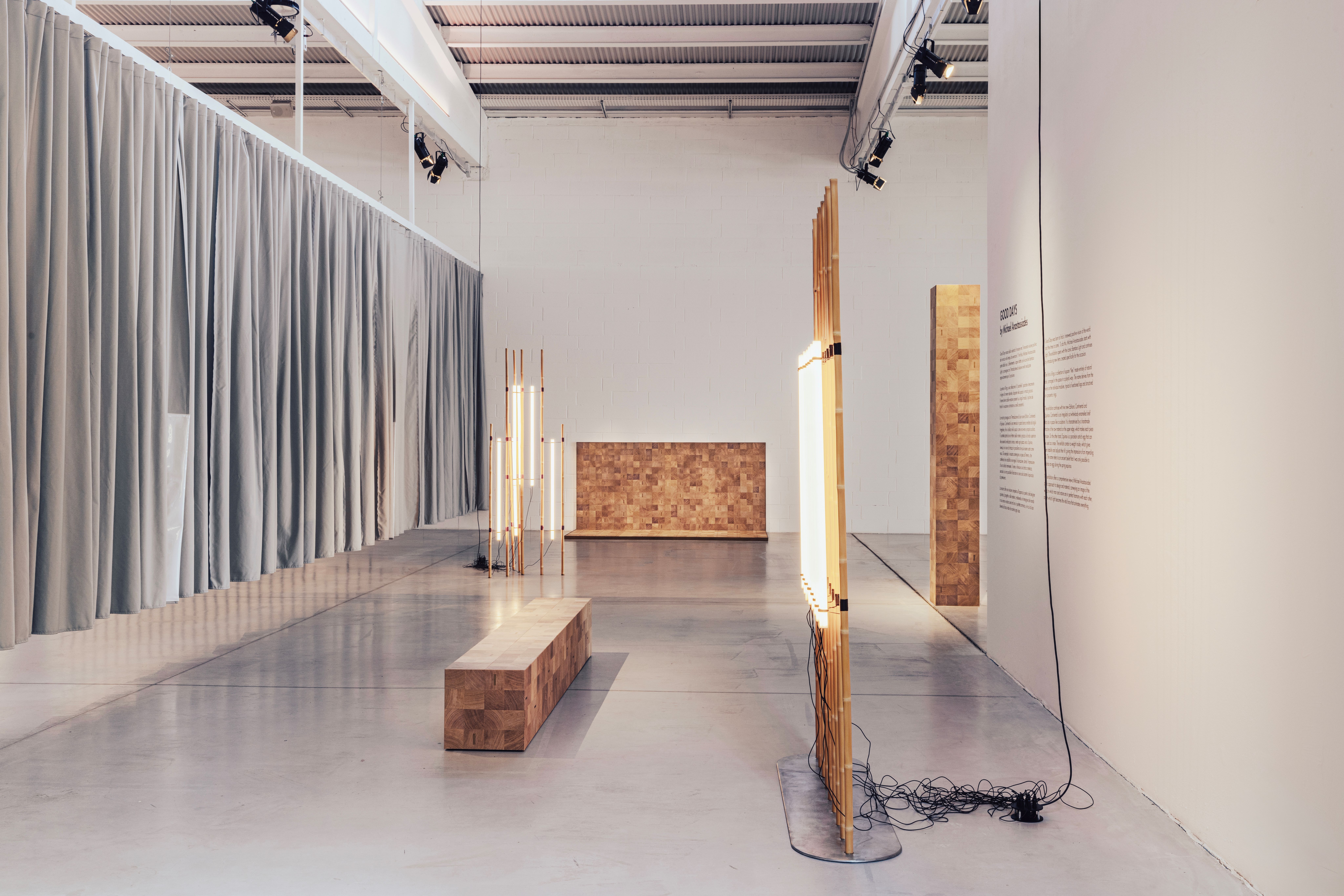
At an intimate Monday-night dinner at Mutina’s Patricia Urquiola-designed headquarters in Fiorano Modenese, a small suburb of Sassuolo that rises towards rolling grassy hills, whose clay-rich soil sparked the tradition of ceramics-making centuries ago, Mutina unveiled Anastassiades’s new exhibition, 'Good Days'. The show comprises several pieces originally debuted at his 2021 show at Milan’s ICA gallery – among them, the standing ‘Bamboo’ light, composed of polished canes and LED tubes lashed together by waxed linen thread – as well an entirely new oak wood tile, ‘Rings’.
'The idea at the beginning was to work with a wooden surface,’ the designer told Wallpaper*. 'So I came up with the idea to use the end grain of the wood to simulate industrial flooring.'
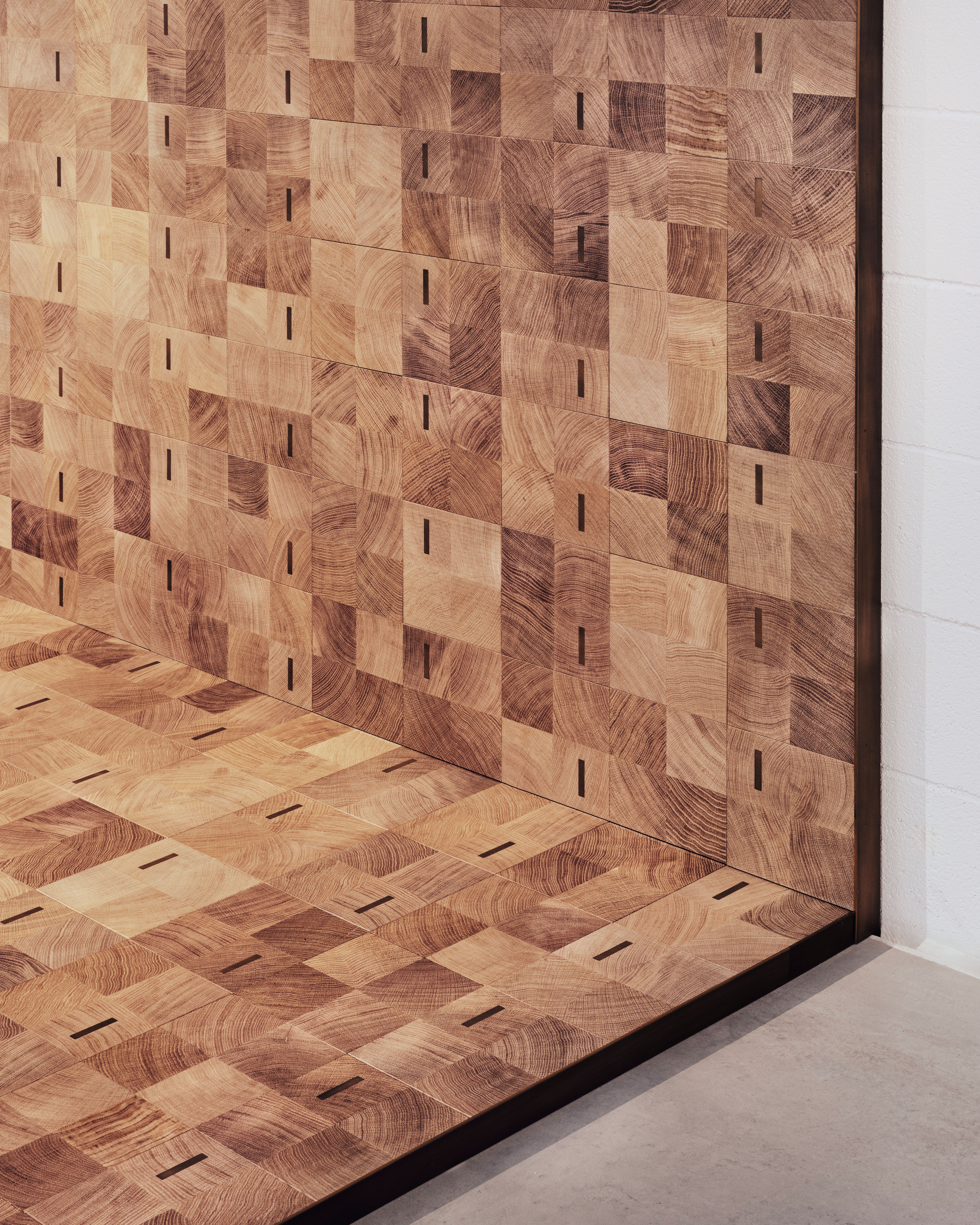
The 17.5 x 17.5 cm tiles resemble the cross-section of a tree trunk, highlighting the wood’s brush stroke-like natural grain. Anastassiades wanted to emulate the cast-off nails and other detritus that become embedded into wooden shop floors after decades of use, so he inserted small pieces of aged délabré brass into the wood. 'We wanted something that would catch the light,' he explains. 'The brass isn’t lacquered, so it will tarnish with time and eventually change.' When placed in a grid, the tiles resemble a collage or pointillist painting due to the diversity of shades, ranging from chocolate brown to honey blonde. To display this effect, Anastassiades clad several rectangular columns with the tiles and placed them in the gallery's centre like totems, or laid them on their sides as if they were benches.
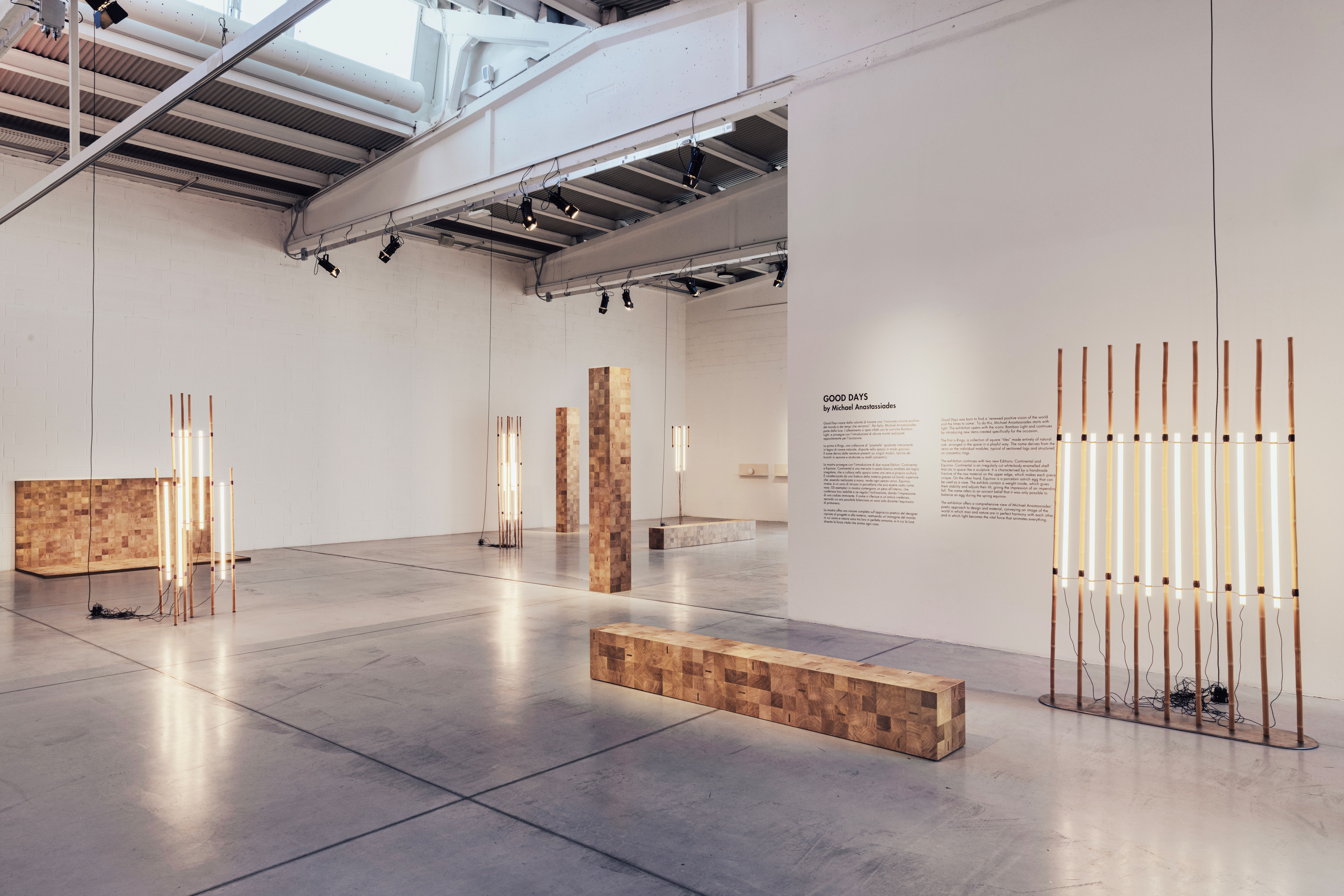
He didn’t, however, abandon ceramics entirely. He also debuted two additional works for Mutina: the porcelain ‘Equinox’ vase, which resembles a cracked ostrich egg, and ‘Continental’, a play on the term continental shelf, a floating white ledge with rough edges made via the process of slip-casting. 'I wanted to make something with a broken edge,' he says, referring to the collection’s underlying theme of exposing industrial flaws. 'Each one is different.'
michaelanastassiades.com mutina.it
